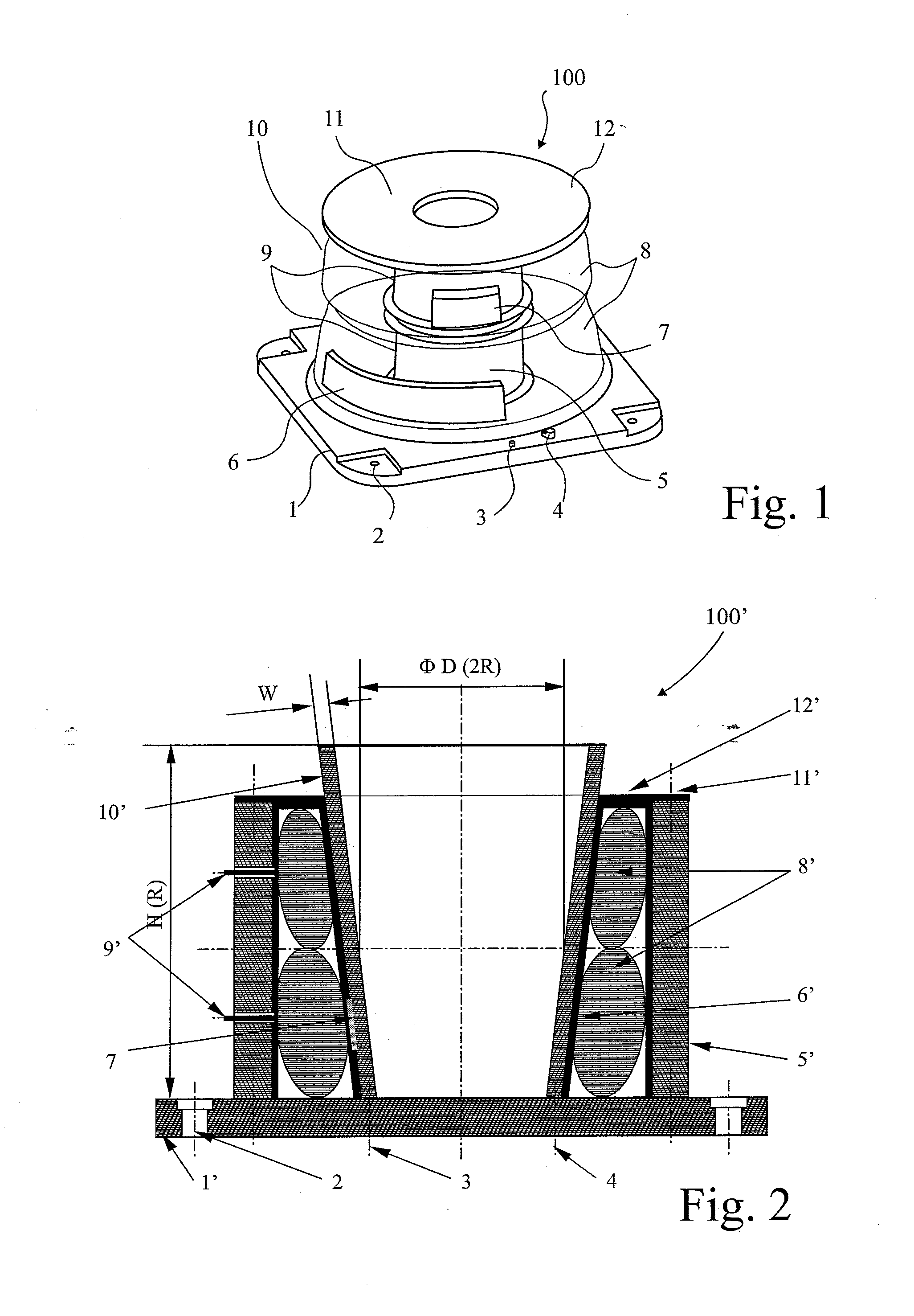Adaptive design of fixture for thin-walled shell/cylindrical components
a technology of cylindrical components and adaptable design, which is applied in the field of structural mechanics, can solve the problems of machining precision problems, lack of static rigidity and dynamic stability of thin walls, and difficult holding of components while machined, so as to prevent the usual exponential growth of vibration, sufficient supporting rigidity and dynamic stability, and satisfying the demand
- Summary
- Abstract
- Description
- Claims
- Application Information
AI Technical Summary
Benefits of technology
Problems solved by technology
Method used
Image
Examples
Embodiment Construction
[0043]In FIG. 1, an internal adaptive fixture 100, for the external machining of a thin-walled cylindrical component 10, comprises a mounting base 1 in the form of a thick-walled plate having mounting holes 2 for connection to the machine table (not shown) of a machining centre (not shown). Positioning pins 3 and clamps 4 locate and clamp the component 10 to the base 1.
[0044]A thick-walled rigid arbour or column 5 is fixed centrally of the base 1 by bolts (not shown). The arbour 5 terminates with a flange to connect to a thick-walled lid 12. Two modified vehicle-wheel inner tubes 8, having an internal radius R corresponding with the radius of the arbour 5, are fitted on the arbour. Being made of elastomeric, resiliently flexible material, the tubes 8 can be inflated to fit the enclosure confined within the cylindrical component 10, support arbour 5, mounting base 1 and lid 12. Each tube 8 has its own air inlet valve 9 on its inner surface, and this is fitted through a respective ape...
PUM
| Property | Measurement | Unit |
|---|---|---|
| total thickness | aaaaa | aaaaa |
| total thickness | aaaaa | aaaaa |
| frequency | aaaaa | aaaaa |
Abstract
Description
Claims
Application Information
 Login to View More
Login to View More - R&D
- Intellectual Property
- Life Sciences
- Materials
- Tech Scout
- Unparalleled Data Quality
- Higher Quality Content
- 60% Fewer Hallucinations
Browse by: Latest US Patents, China's latest patents, Technical Efficacy Thesaurus, Application Domain, Technology Topic, Popular Technical Reports.
© 2025 PatSnap. All rights reserved.Legal|Privacy policy|Modern Slavery Act Transparency Statement|Sitemap|About US| Contact US: help@patsnap.com



